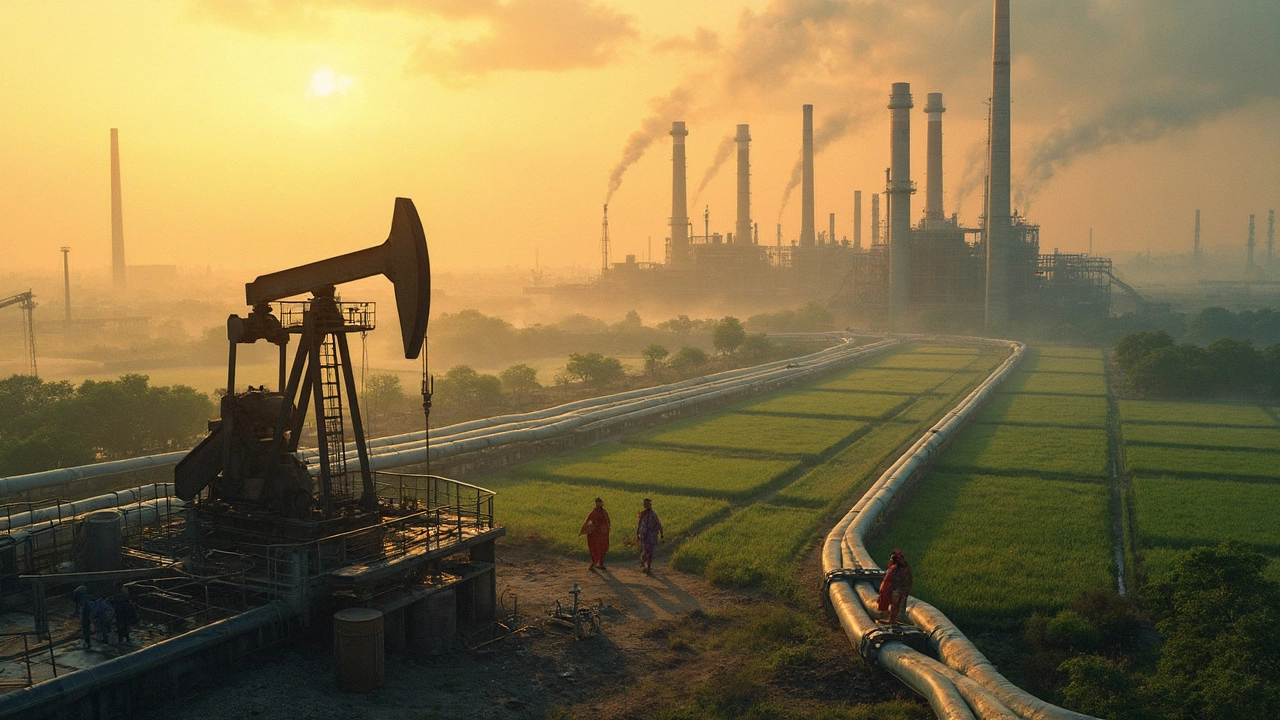Petrochemicals – Key Trends and Industry Insights
When discussing petrochemicals, hydrocarbon‑derived chemicals that power plastics, fertilizers, fuels, and many everyday products. Also known as petro‑chemical products, they are the backbone of modern manufacturing. The sector sits inside chemical manufacturing, the process of turning raw hydrocarbons into usable chemicals, feeds the plastic industry, global production of polymer‑based goods, and supports fertilizer production, the creation of nitrogen‑based crop enhancers. These connections make petrochemicals essential for both consumer markets and agriculture.
In the past five years, India’s petrochemical output has grown at an average of 7% per year, driven by rising demand for packaging, automotive parts, and agro‑inputs. That growth mirrors global trends where Asia accounts for over 55% of new polymer capacity. If you’re tracking where money flows, expect more capital directed toward expanding cracker complexes and downstream units.
Leading players such as BASF, Dow, SABIC, and Indian giants like Reliance Industries dominate the market. Their annual revenues exceed $20 billion, and they continuously invest in high‑margin specialty chemicals. The competitive landscape pushes firms to innovate in catalyst technology, which directly improves petrochemical yields and reduces energy consumption.
The petrochemicals sector also fuels the plastic industry’s evolution. Today’s top plastic manufacturers—identified in recent reports—focus on lightweight, recyclable polymers that meet stricter environmental rules. Companies that master the link between petrochemical feedstock and sustainable polymer design gain a clear market edge.
Fertilizer production leans heavily on petrochemical derivatives like ammonia and urea. As India’s food demand climbs, fertilizer manufacturers are scaling up, relying on stable petrochemical supplies to keep prices in check. This interdependence means any disruption in hydrocarbon feedstock reverberates through the agricultural sector.
Refinery processes serve as the starting point for petrochemical chains. Crude oil distillation produces naphtha, which crackers then split into ethylene and propylene—core building blocks for most chemicals. Enhancements in refinery efficiency, such as advanced catalytic reforming, directly boost petrochemical output and lower production costs.
Policy shifts are shaping the field too. The Indian government’s push for a “petrochemical corridor” includes tax incentives, easing of land acquisition, and support for green hydrogen projects that could replace some fossil‑based feedstocks. Investors watching these reforms can anticipate new opportunities in both upstream and downstream segments.
Technology is another game‑changer. Digital twins, AI‑driven process optimization, and carbon capture are being piloted at major sites. These tools help firms meet tighter emissions caps while maintaining high throughput, illustrating how petrochemicals are moving toward a more sustainable future.
Why Petrochemicals Matter Today
From the daily plastic bottle you drink from to the fertilizer that helps grow your food, petrochemicals touch almost every aspect of modern life. Understanding their role gives you a clearer picture of market dynamics, investment prospects, and the environmental challenges ahead.
Below, you’ll find a curated collection of articles that dive deeper into these topics—covering top chemical companies, plastic manufacturing trends, supply‑chain gaps, and more. Use them to sharpen your strategy, discover new growth areas, or simply stay informed about where the industry is heading.
